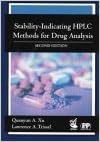Implications of Failing Stability Testing
Stability testing is a critical component of pharmaceutical development, ensuring that products maintain their quality and safety over time. However, when a pharmaceutical product fails stability testing, it can have significant implications for both the product and the manufacturer. In this discussion, I’ll delve into the key implications of failing stability testing.
Quality and Safety Concerns
1. Product Efficacy: Failing stability testing could indicate that the product’s potency, efficacy, or therapeutic effect has diminished, rendering it ineffective.
2. Patient Safety: Products that fail stability testing may contain impurities, degradation products, or altered properties that could pose risks to patient safety.
3. Regulatory Compliance: Regulatory agencies require that pharmaceutical products meet specified stability criteria, and failure to do so may result in non-compliance.
Investigation and Root Cause Analysis
1. Deviation Investigation: Failing stability results trigger thorough investigations to identify the cause of the failure and the extent of the issue.
2. Root Cause Analysis:
Manufacturers must determine whether the failure is due to product formulation, manufacturing processes, packaging, or storage conditions.3. Corrective and Preventive Actions (CAPA): Implementing CAPA measures to address the root cause is essential to prevent similar failures in the future.
Financial Impact
1. Loss of Investment: Manufacturers invest significant resources in research, development, and production. Failing stability testing can result in financial losses.
2. Delays: Correcting stability-related issues may delay product launch or require costly modifications to processes and formulations.
3. Product Recall: In severe cases, product recalls may be necessary, leading to substantial financial consequences.
Reputation and Market Image
1. Damage to Reputation: Failing stability testing can tarnish a manufacturer’s reputation for producing reliable and effective products.
2. Loss of Trust: Consumers and healthcare professionals may lose trust in the manufacturer’s ability to deliver safe and effective products.
3. Competitor Advantage: Competitors may gain a competitive advantage if they have stable products that meet quality and safety standards.
Regulatory and Legal Consequences
1. Regulatory Action: Regulatory agencies may take action against the manufacturer, including warning letters, fines, or product recalls.
2. Legal Liability: If patients are harmed due to the use of unstable products, manufacturers could face legal liability and lawsuits.
Remediation and Re-Testing
1. Remediation Plan: Manufacturers must develop a comprehensive plan to address the stability issues and implement corrective actions.
2. Re-Testing: After implementing corrective actions, re-testing stability samples is necessary to demonstrate that the issues have been resolved.
Re-Evaluation of Shelf Life
1. Shelf Life Extension: Failing stability testing may require manufacturers to revise the original shelf life estimation based on the new stability data.
2. Regulatory Approval: Any changes to the declared shelf life may require regulatory approval and submissions.
Conclusion
Failing stability testing can have far-reaching implications for product quality, patient safety, reputation, and regulatory compliance. Manufacturers must take immediate action to investigate the root causes, implement corrective measures, and re-evaluate the product’s stability. By addressing stability-related issues transparently and effectively, manufacturers can uphold their commitment to producing safe, effective, and reliable pharmaceutical products.

